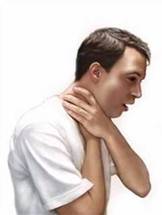This weekend we were invited out to diner with friends to a family birthday at the Keg. The drinks were flowing and the food was delicious. Appetizers appeared before our eyes and we ate contented to wait for our entrée’s. The conversation flowed as much as the drinks and diner arrived. Everyone was enjoying the evening with family and good friends. However the evening took a turn for the worst when a friend suddenly turned quiet – and for someone who is rarely quiet we knew something must be up.
She raised her glass of water to her lips and took a sip. Moments later the water was coming back up, unable to get down her throat – at first we thought perhaps she was ill but soon realized that she was in fact choking – In a instant the person to my right was up and had her standing and commenced the Heimlich maneuver. It only took a moment for the blockage to dislodge but it seem much longer. Once she was able to breath she sat back down in her seat shaken and then she said something that struck me – “I’m so embarrassed†- WHAT you can’t breath you’re scared and you feel embarrassed – I wonder how many other people have been through a similar situation. Even though we continually tried to make her feel less “embarrassed†it didn’t work – How many people Choke or start to choke but don’t ask for the help they need out of feeling embarrassed by “making a spectacle of themselvesâ€.
So here are a few tips and reminders about the first things you should remember and I’m going to say this first because she wasn’t sure of what to do – the sign to use to indicate to someone that you’re choking is this.
If someone you know or even if someone you don’t know is choking here are the steps to performing the Heimlich maneuver
Steps
1. Determine if the person is a choking victim. A choking victim will often have their hands around their throat and a desperate or panicked look on their face. Actual choking victims are getting no air through to their lungs (called a complete airway obstruction), so they will not be able to consent to a question “Are you okay?” or “Do you need help?” except by nodding their head1.
2. Get the victim in a standing position.
3. Stand behind the victim. Stand with your legs separated, to form a “tripod” in the event the victim faints or becomes unconscious.
4. Reach around the victim from behind.
5. Make a fist just above their navel with your dominant hand.
6. Wrap your other hand around this fist. Be sure to tuck your thumbs in to prevent injury to the victim.
7. Pull inward and upward into the victim’s abdomen with quick upward thrusts. The motion should be similar to the letter “J” – in and then up. Your thrusts should be quick and forceful, as if you are trying to jerk them off their feet from this position. Do several upward thrusts until they cough out the obstacle obstructing their air way.
8. Check to see if normal breathing has returned. Once the object is gone, most people will return to breathing normally. If normal breathing has not returned or if the person is unconscious, and alternate between abdominal thrusts and rescue breathing until help arrives.




1 Comment
** cough, choke, cough, cough ** – STOP RUSHING ME, I AM TRYING TO DETERMINE IF THEY ARE CHOKING, K ?! GEEZ.